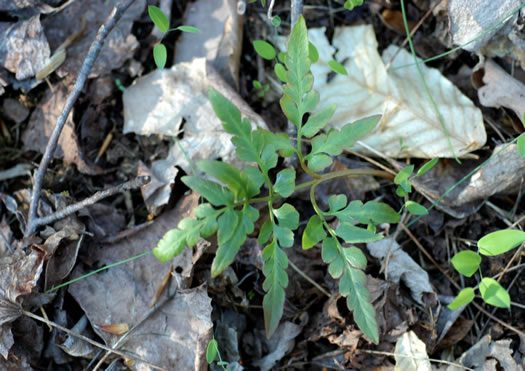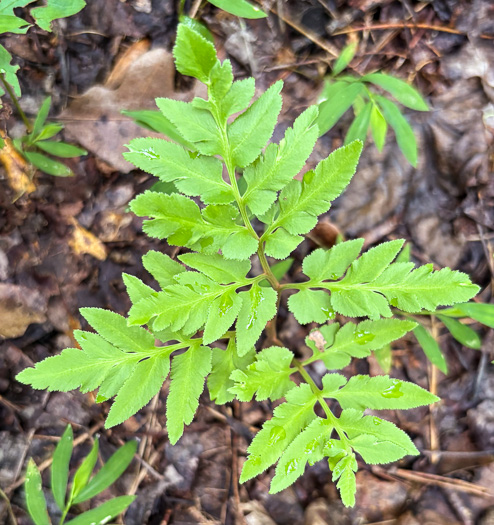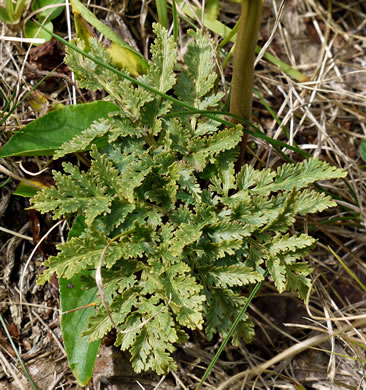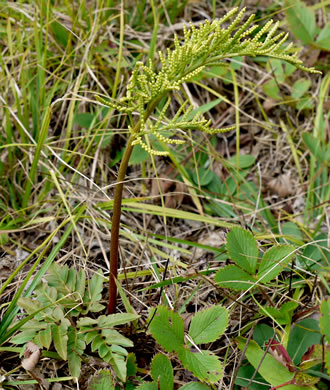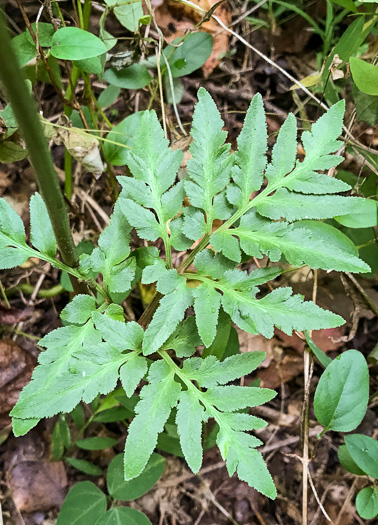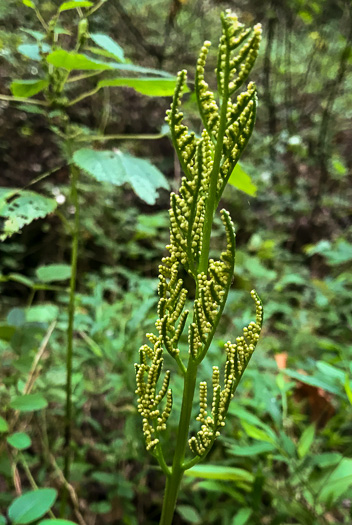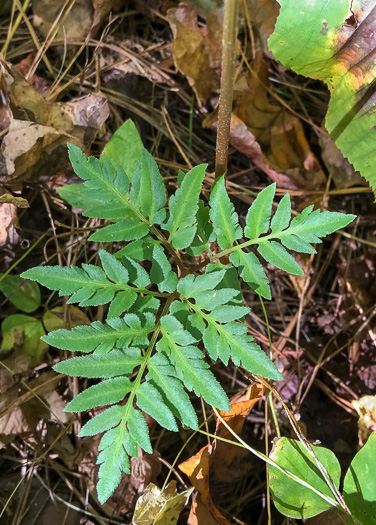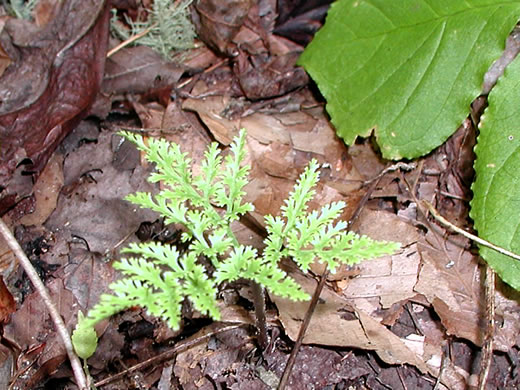Monilophytes (ferns): Ophioglossoid Ferns (eusporangiate ferns): Ophioglossales
WEAKLEY'S FLORA OF THE SOUTHEASTERN US (4/24/22):
Sceptridium dissectum
FAMILY
Ophioglossaceae
Go to FSUS key
Dig deeper at SERNEC, a consortium of southeastern herbaria.
Learn more about Sceptridium from the Vascular Plants of North Carolina.
SYNONYMOUS WITH
PLANTS NATIONAL DATABASE:
Botrychium dissectum
FAMILY
Ophioglossaceae
SYNONYMOUS WITH Floristic Synthesis of North America. BONAP (Kartesz, 2021)
Sceptridium dissectum
SYNONYMOUS WITH Flora of North America
Botrychium dissectum
SYNONYMOUS WITH The Ferns and Lycophytes of Texas (Diggs & Lipscomb, 2014)
Botrychium dissectum
INCLUDED WITHIN Guide to the Vascular Plants of Florida (Wunderlin & Hansen, 2003)
Botrychium dissectum
SYNONYMOUS WITH Floristic Synthesis of North America (Kartesz, 1999)
Botrychium dissectum
SYNONYMOUS WITH VASCULAR FLORA OF THE CAROLINAS (Radford, Ahles, & Bell, 1968) 006-01-003:
Botrychium dissectum FAMILY Ophioglossaceae
INCLUDING Ferns of the Southeastern States (Small, 1938)
Botrychium dissectum
INCLUDING Ferns of the Southeastern States (Small, 1938)
Botrychium obliquum
COMMON NAME:
Cutleaf Grapefern, Dissected Grapefern
To see larger pictures, click or hover over the thumbnails.
JK Marlow jkm250723_1757
July Greenville County SC
Poinsett Bridge Heritage Preserve
In our area, forma obliquum is more common, often confused with B. biternatum, per Weakley's Flora (2025).
JK Marlow jkm140907_366
September Jackson County NC
Blue Ridge Parkway
Forma dissectum is rare in GA-NC-SC, occurring primarily in the Mountains, per Weakley's Flora (2012).
JK Marlow jkm140907_369371
September Jackson County NC
Blue Ridge Parkway
Fertile and sterile stalks joined far below the base of the leaf blade, per Weakley's Flora (2012).
JK Marlow jkm240911_0986
September Greenville County SC
Sterile blade mostly 3-pinnate (+); ultimate segments trowel-shaped, margins usually not parallel, per Weakley's Flora (2025).
JK Marlow jkm240911_0987
September Greenville County SC
The Grape Fern common name refers to the fertile leaves and large sporangia, yellow when mature, per Weakley's Flora (2025).
JK Marlow jkm241016_1312
October Greenville County SC
Thick leathery leaves ternately divided, overall outline equilaterally triangular or pentagonal, per Weakley's Flora (2025).
WEAKLEY'S FLORA OF THE SOUTHEASTERN US (4/24/22):
Sceptridium dissectum
FAMILY
Ophioglossaceae
SYNONYMOUS WITH
PLANTS NATIONAL DATABASE:
Botrychium dissectum
FAMILY
Ophioglossaceae
SYNONYMOUS WITH
Floristic Synthesis of North America. BONAP (Kartesz, 2021)
Sceptridium dissectum
SYNONYMOUS WITH
Flora of North America
Botrychium dissectum
SYNONYMOUS WITH
The Ferns and Lycophytes of Texas (Diggs & Lipscomb, 2014)
Botrychium dissectum
INCLUDED WITHIN
Guide to the Vascular Plants of Florida (Wunderlin & Hansen, 2003)
Botrychium dissectum
SYNONYMOUS WITH
Floristic Synthesis of North America (Kartesz, 1999)
Botrychium dissectum
SYNONYMOUS WITH
VASCULAR FLORA OF THE CAROLINAS (Radford, Ahles, & Bell, 1968) 006-01-003:
Botrychium dissectum
FAMILY
Ophioglossaceae
INCLUDING
Ferns of the Southeastern States (Small, 1938)
Botrychium dissectum
INCLUDING
Ferns of the Southeastern States (Small, 1938)
Botrychium obliquum
If a search such as "Carex leptalea var. leptalea" doesn't deliver the results you want, try "Carex leptalea".
Or, to minimize chances of a misspelling, try just "Carex le".
Less is more: If "pencil flower" doesn't deliver the results you want, try "pencil".

